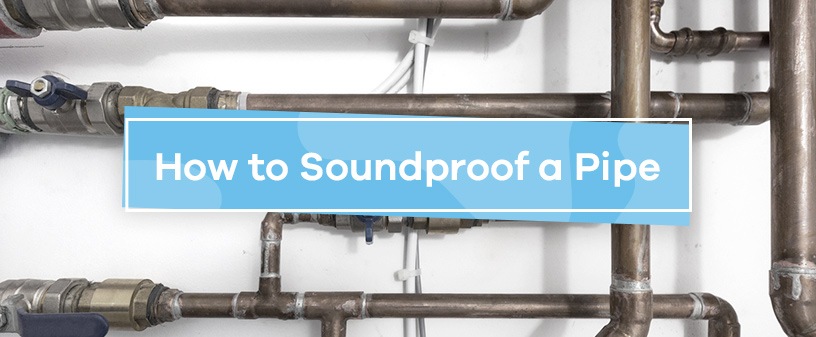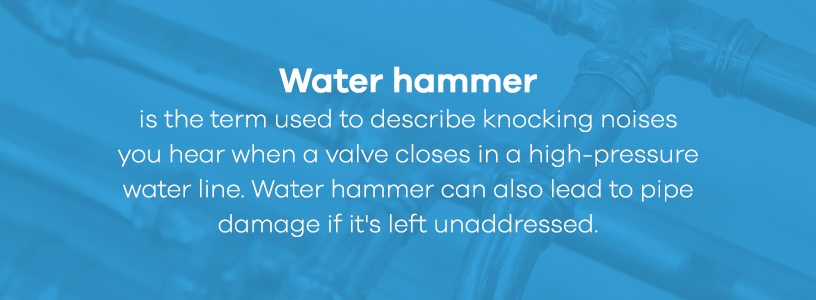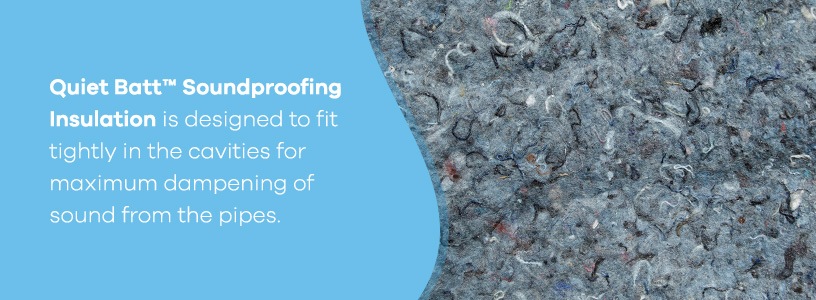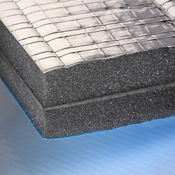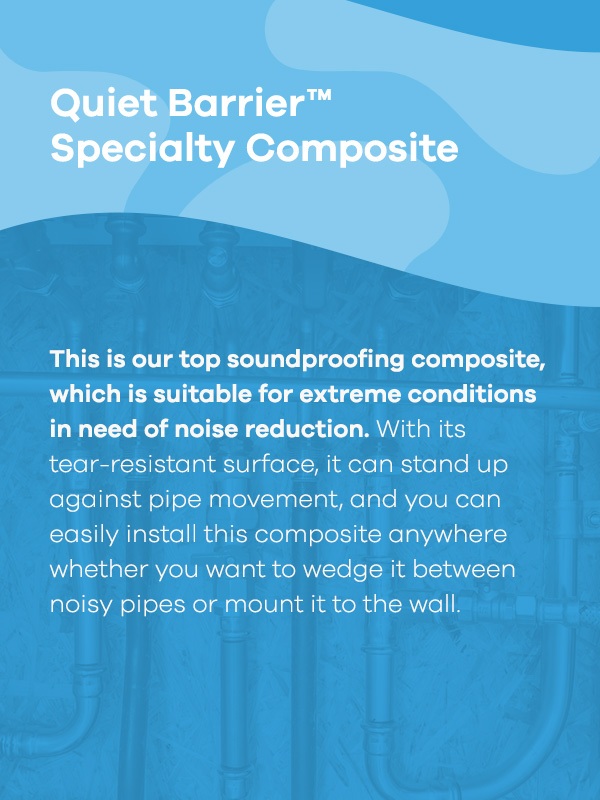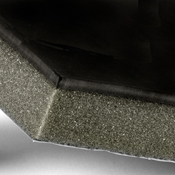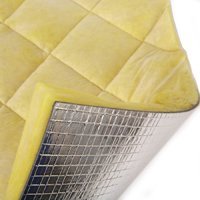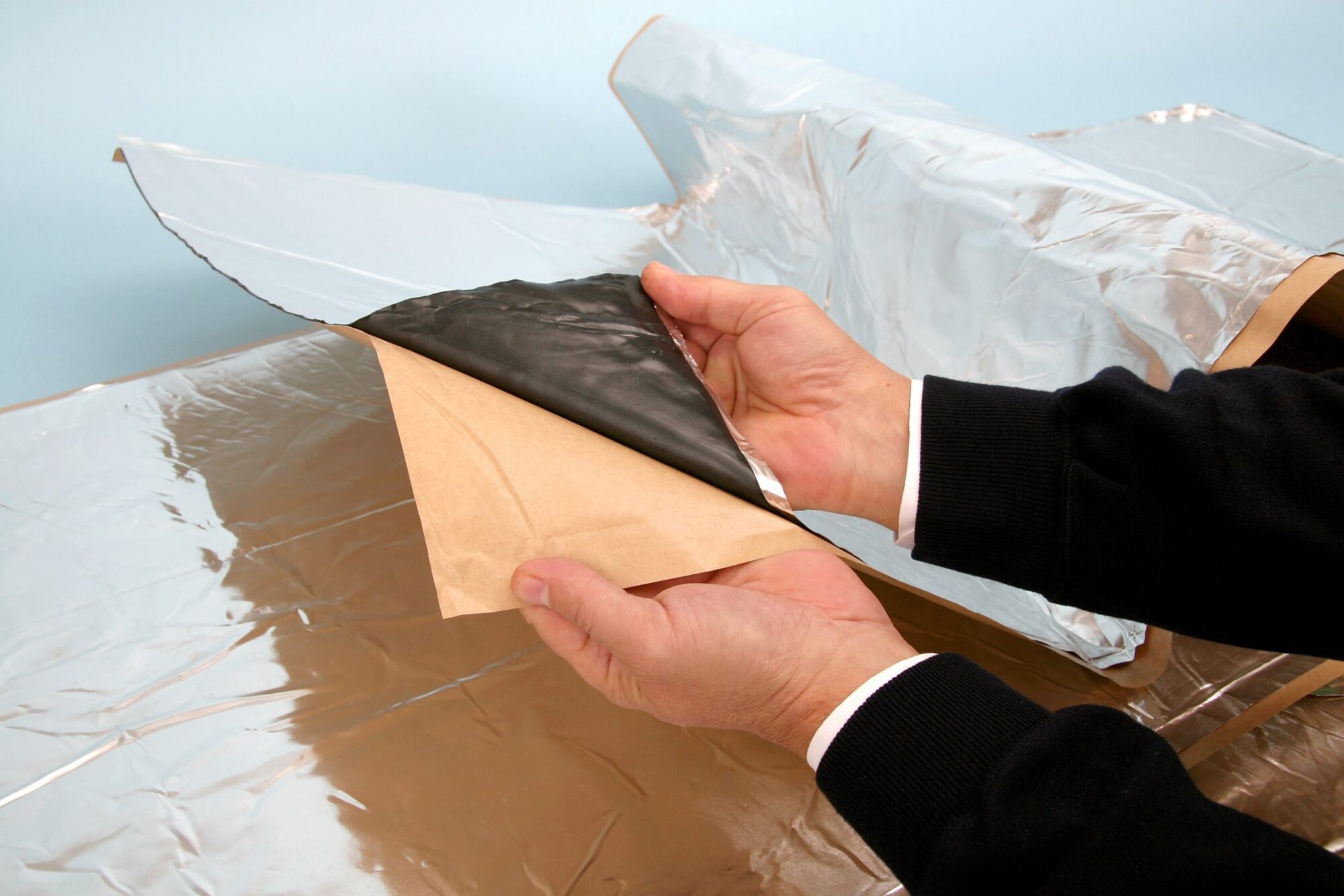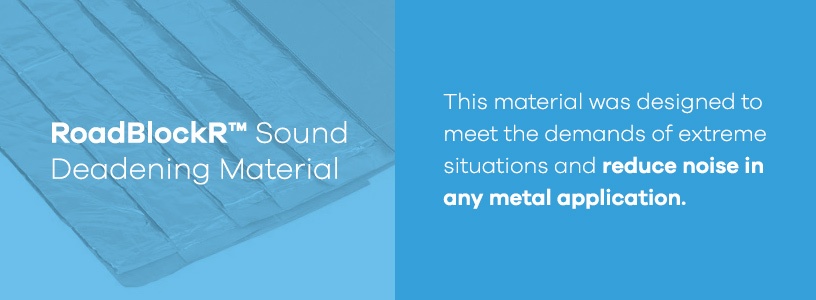

Pipe Soundproofing
Pipes are hidden behind walls and ceilings, away from the living space. But these walls and ceilings provide little soundproofing. While pipe soundproofing is recommended during construction, any exposed or accessible existing pipe can be treated. Post-construction treatment is especially common in older homes that still use cast iron pipes. Copper and polyvinyl chloride (PVC) piping, which also create unwanted noise, can be treated after construction, as well.
If booming pipes are preventing you from enjoying peace in your home, you have options for water pipe noise reduction. One of the best ways to soundproof water pipes is to wrap them with an insulating material to help block noise and dampen vibrations. Keep reading for more tips and products that can be used to make water pipes quieter.
Recommended Methods to Quiet Noisy Pipes
There are several methods for soundproofing pipes. Here are two of the best:
Wrapping pipes: Wrapping pipes with a dense vinyl material will block the noise and dampen the vibrations. We recommend buying Quiet Wrap™ Pipe Soundproofing Wrap, which will significantly reduce the noise created by pipes.
Filling wall cavity: If the pipe is encased in drywall, use a sound absorption product like Quiet Batt® Soundproofing Insulation. This dense, recycled, cotton material can be installed around the pipe in the empty space of the drywall, eliminating the sound vibrations made by the piping. Quiet Batt® Soundproofing Insulation not only reduces sound — it also insulates.
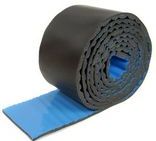 Shop Pipe Soundproofing Products
Shop Pipe Soundproofing Products

Pipe Soundproofing Products

Quiet Wrap™ Pipe Soundproofing Wrap
$32.25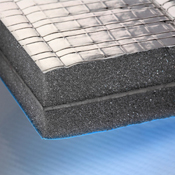
Quiet Barrier® Specialty Composite
$175.99 $165.99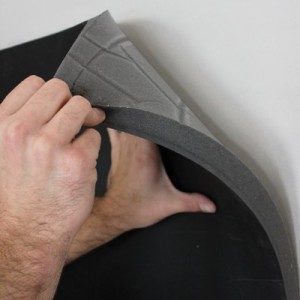
Quiet Barrier® HD Soundproofing Composite
$349.99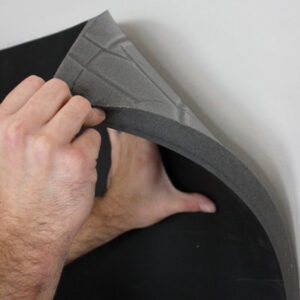
Quiet Barrier® HD Soundproofing Composite (w/PSA)
$434.99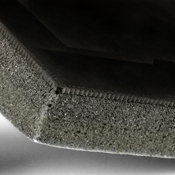
Quiet Barrier® MD Soundproofing Composite
$265.99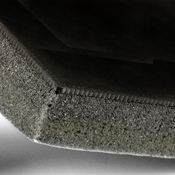
Quiet Barrier® MD Soundproofing Composite (w/PSA)
$325.99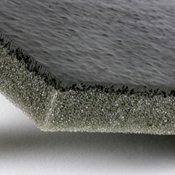
Quiet Barrier® LD Soundproofing Composite
$229.99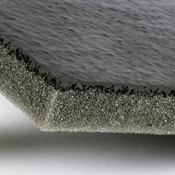
Quiet Barrier® LD Soundproofing Composite (w/PSA)
$279.99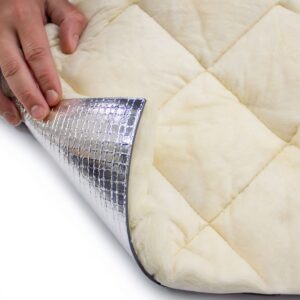
Quiet Barrier® Lag
$50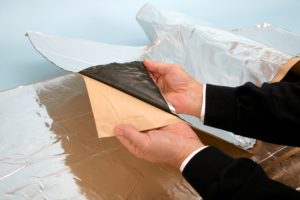
RoadBlockR Sound Deadening Material
$36 What Causes and How to Fix Noisy Water Pipes
What Causes and How to Fix Noisy Water Pipes
What Causes Noisy Water Pipes?
Water pipe noise can be tricky, especially since pipes are usually out of sight. However, sound is created when an object vibrates and sends sound waves to your ears. If a pipe bangs against the wall as water flows through it, or whistles because there’s mineral buildup inside, you may hear unwanted sounds or noise. There are several possibilities as to why your pipes are noisy, and it helps to envision the plumbing system in your home to determine where the noise may be coming from.
You will find two main types of plumbing systems in a house — the water supply system and the drainage system. Your water pipe system brings in treated water, which you use in your sink, shower, toilet, dishwasher and washing machine. The water that enters is under pressure so that it can travel to the upstairs bathroom or around a corner to the kitchen sink. The pressure is one of the reasons water supply pipes might be noisy. On the other hand, drainpipes use gravity to take wastewater from the home and usually aren’t as noisy unless they bang against the water pipes.
We will explore a few of the noisy pipe possibilities here. It is important to figure out the cause of the noise before making any changes to your home or installing pipe sound insulation. Whether your water pipes are made of plastic, copper, iron or steel, pipe noise may be caused by any of the following.
1. Water Hammer
Water hammer is the term used to describe the knocking noises you hear when a valve closes in a high-pressure water line. You might hear water hammer when you quickly shut off a faucet or when an appliance suddenly closes a water valve.
As an example, imagine your washing machine. When you do laundry, your washing machine quickly fills with water that travels through a pipe via high pressure. When the washing machine fills up, the water valve abruptly closes, and the water has nowhere to go. As a result, the high-pressure water may slam against the pipes and cause them to move around and bang against the wall or other pipes, producing a racket. For this reason, water hammer can also lead to pipe damage if left unaddressed.
If water hammer is the source of pipe noise in your home, you will want to take several steps to eliminate the issue. You might need to drain the air chamber — a shock-absorbing pipe located near the water valve — or install a water hammer arrestor to absorb jolts. Water hammer may also be a sign of extreme water pressure. Generally, the water pressure should not be above 60 pounds per square inch (psi), and you may need to lower the water pressure. Finally, you can soundproof water pipes with pipe insulation.
2. Copper Pipes
If you have copper water pipes, you might notice ticking sounds whenever you use hot water. This is because hot water causes copper pipes to expand and hit the surrounding pipes or other objects. Once the pipes cool, they contract and may produce a creaking sound.
You can try to reduce copper pipe noise by turning down the thermostat on your water heater. According to the U.S. Department of Energy, most household water heaters only need to be set at 120 F. If turning down the water heater isn’t an option or doesn’t quiet water pipes, consider soundproofing water pipes with pipe insulation.
3. Loose Pipes
Pipes that are loosely attached can vibrate due to water pressure and cause knocking noises. You can reduce noise by securing the pipes with straps, tightening loose straps or wrapping pipes with insulation.
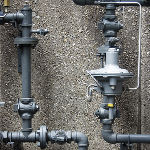 How to Fix Noisy Pipes
How to Fix Noisy Pipes
How to Fix Noisy Water Pipes
If noisy pipes wake you up at night or make you wonder if an intruder broke in, it is time to take action. Noise makes a home a little less homey, but the good news is that it does not have to stay that way.
If you are ready to soundproof your water pipes, you have two main options. You can either wrap the pipes with noise blocking materials or fill the cavities around the pipes with sound absorption products. Using both noise blocking and sound absorption materials can eliminate the sounds of pipes in your home. It is best to soundproof pipes when walls are open before drywall is installed, but we understand that this process is not always possible. You can apply the following methods to any exposed pipes you can find.
1. Wrap Pipes
Wrapping pipes with a soundproofing material will block the noise and dampen the vibrations. You might wrap noisy copper pipes, for example, to muffle the noise of expanding and contracting due to temperature changes. We recommend applying our Quiet Wrap™ Pipe Soundproofing Wrap. To wrap noisy pipes with Quiet Wrap™, follow these steps:
- Clean the pipe to make sure it is free of dirt or dust.
- Measure the pipe’s length to determine how much material you need.
- Cut the pipe sound insulation to the appropriate size using a utility knife, or cut the material as you wrap it around the pipe.
- Start at one end of the pipe.
- Peel back the edge of the blue peel-and-stick backing to reveal 4 to 5 inches of the backing.
- Hold the material at a slight angle and press firmly to make sure it adheres to the pipe properly.
- Work your way down the pipe peeling the peel-and-stick backing and pressing firmly.
- If the material wrinkles, simply cut the material and start over following the above steps until the pipe is completely covered.
We also carry Quiet Wrap™ LD Pipe Soundproofing Wrap, which is especially effective with PVC and cast iron pipes. This wrap is constructed out of dense vinyl and includes a foam composite barrier to help block sounds and dampen vibrations — while being able to withstand temperatures up to 140 degrees Fahrenheit. It features an easy peel-and-stick application, as well, making it easier than ever to achieve a more quiet space.
By wrapping either type of sound deadening insulation around your pipes, you will reduce noise and decrease the chance of pipes freezing in the winter.
2. Fill Wall Cavity
When deciding how to soundproof a pipe, you may be limited by the construction of the building where the pipe is located. Sometimes it is not feasible to try to access the pipe directly to try to wrap it in soundproofing wrap. In the past, people may have been reluctant to attempt to dull sound from pipes by filling the cavities in the wall because the insulation available often did not fit the space well and had an undesirable chemical composition.
Since Quiet Batt® Soundproofing Insulation is mostly recycled cotton material, you can handle it without gloves and easily place it where it needs to go without concerns that you should be utilizing a more natural material. It is also designed to fit tightly in the cavities for maximum dampening of sound from the pipes. Quiet Batt® Soundproofing Insulation has a Class A flammability rating, so you can install it in your walls with peace of mind. To install Quiet Batt®, follow these steps:
- Measure the area to be covered with Quiet Batt®.
- Mark the Quiet Batt® insulation appropriately using a tape measure, straight edge and marker.
- Cut the material using a utility knife or serrated blade.
- Press the Quiet Batt® into the stud or joist bay and allow friction to keep it in place.
 Best Pipe Soundproofing Materials
Best Pipe Soundproofing Materials
Pipe Soundproofing Products
At Soundproofcow.com, we’re ready to get your pipe soundproofing project mooving. We offer a range of easy-to-install soundproofing solutions to help you quiet water pipes faster than a running faucet. Here are our recommended products to put an end to the banging, ticking and rattling.
1. Quiet Wrap™ Pipe Soundproofing Wrap
Our Quiet Wrap™ Pipe Soundproofing Wrap will significantly reduce the noise created by pipes. This is an industrial-grade composite manufactured with a high-density sound barrier membrane and laminated with polyurethane foam. With its peel-and-stick backing, installation is quick and easy.
One of the reasons why Quiet Wrap™ Pipe Soundproofing Wrap is so effective at pipe soundproofing is because of the way water pipes tend to create sound. Much of the noise that noisy water pipes generate comes from the impact-related, vibrational noise of water beating against the walls of the pipe as it rushes through. This is why the polyurethane foam layer is so critical to Quiet Wrap™ Pipe Soundproofing Wrap’s effective soundproofing.
While the barrier blocks most standard noise, the layer of polyurethane foam isolates the barrier, making it a more effective sound blocker, and reduces the vibration of the pipe, deadening the impact noise. The result is a much quieter or even unnoticeable pipe sound. Quiet Wrap™ Pipe Soundproofing Wrap is suitable for any size water pipes, PVC pipes or cast iron, so you can order with confidence to quiet your plumbing noise.
2. Quiet Barrier® Specialty Composite
Our Quiet Barrier® Specialty Composite features four unique layers for extreme soundproofing power:
- Polyester film: The top layer is a polyester film that resists heat, tearing and high-frequency sound. This layer makes Quiet Barrier® Specialty Composite an excellent choice where heat is a concern.
- Foam layer: Beneath the film is a 3/4-inch foam layer that absorbs sound frequencies at all levels. In other words, whether your pipes whistle, squeak or rumble like thunder, this foam’s got you covered.
- Soundproofing product: Next, a layer of our Quiet Barrier® LD soundproofing product blocks sounds like a pro.
- Another foam layer: Finally, the last layer of foam separates the sound-blocking layer from the mounting surface to enhance its soundproofing capabilities.
This is our top soundproofing composite, which is suitable for extreme conditions in need of noise reduction. With its tear-resistant surface, it can stand up against pipe movement, and you can easily install this composite anywhere whether you want to wedge it between noisy pipes or mount it to the wall.
If you choose the material without pressure sensitive adhesive (PSA), you can place the composite where you wish using PL® Premium Polyurethane Construction Adhesive. Just make sure to seal the edges where different pieces meet using reinforced aluminum tape. You will want the area to be covered 100% to ensure maximum noise reduction.
If you want to skip the glue, choose our Quiet Barrier® Specialty Composite With PSA for even easier installation. With the peel-and-stick backing, all you need to do is cut the size and shape you want, peel the back, and stick it in place. You will still want to cover seams with reinforced aluminum tape after installation to ensure superior soundproofing.
3. Quiet Barrier® Soundproofing Composite
Our Quiet Barrier® Soundproofing Composite is similar to our specialty composite in that it both blocks and absorbs noise, but it does not include the film face. We offer the following levels of thickness to meet your soundproofing needs:
- Quiet Barrier® HD Soundproofing Composite: Our Quiet Barrier® HD Soundproofing Composite with or without a PSA backing is the thickest of our three soundproofing composites. This product provides a 1/4-inch soundproofing barrier and 1 inch of acoustic foam for an overall sound transmission class (STC) rating of 32. The top layer is the barrier itself, adding mass and functioning as a noise blocker. The second layer is an acoustic foam that adds mass, blocks noise and separates the barrier from the mounting surface to keep vibrations away from the barrier. The result is a soundproofing composite that works.
- Quiet Barrier® MD Soundproofing Composite: Our Quiet Barrier® MD™ Soundproofing Composite is our medium thickness composite. With this product, you will find a 1/8-inch barrier and 1 inch of acoustic foam with an overall STC rating of 27. Because the Quiet Barrier® MD™ composite is thinner and about half the weight of the HD™ composite, it may be the better choice for tight spaces, or where greater flexibility is needed. Choose our Quiet Barrier® MD™ Soundproofing Composite With PSA to make installation a cinch.
- Quiet Barrier® LD Soundproofing Composite: Our Quiet Barrier® LD™ Soundproofing Composite is lightweight and thinner than the other two composites, making it suitable for just about any application. For example, you might wrap Quiet Barrier® LD™ composite around the ends of pipes emerging from the walls. With the Quiet Barrier® LD™ composite, you ll get a 1/16-inch barrier, a 1/2 inch of acoustic foam and a 20 STC rating. Like our other composites, our Quiet Barrier® LD™ Soundproofing Composite is also available with PSA, making this budget-friendly soundproofing solution udderly convenient.
One of our thinner composites may be the ideal solution for water pipe sound insulation or to keep pipes from hitting other objects since they’re more flexible, while the HD composite may be best for filling in wall cavities that house noisy pipes.
4. Quiet Barrier® Fiberglass Composite
Our Quiet Barrier® Fiberglass Composite includes 1/8 inch of Quiet Barrier®, a polyester film face and 1 inch of quilted acoustic fiberglass. Our fiberglass composite is extremely flexible, making it a great choice for silencing noisy pipes in tight or hard-to-reach spaces.
You can install our Quiet Barrier® Fiberglass Composite using PL® Premium Polyurethane Construction Adhesive and reinforced aluminum tape. Another bonus to using fiberglass composite is its ability to keep heat in during the winter and keep heat out during the summer. Therefore, if you soundproof noisy water pipes with fiberglass composite, you will enjoy more peace and greater comfort all around.
5. RoadBlockR™ Sound Deadening Material
RoadBlockR™ is our premium car soundproofing product but is not just for the road. With a specially formulated rubber-based layer and polished film facing, RoadBlockR™ is a high-performing noise dampening material that is barely noticeable to the eye. It’s also resistant to water, making it a good choice for moisture-prone areas.
This material was designed to meet the demands of extreme situations and reduce noise in any metal application. Commonly used in the automotive, marine and construction industries to line compartments and enclosures, RoadBlockR™ can easily be applied to water pipes. RoadBlockR™ is only 0.078 inches thick, so you should not have trouble wrapping this sound deadening pipe insulation around water supply lines or fitting it into tight spaces. Plus, its thinness makes it easy to cut for custom shapes and sizes.
If you are looking for an affordable, effective and easy-to-install soundproofing solution, consider RoadBlockR™.
Why Trust Soundproof Cow for Pipe Soundproofing Solutions?
If you are dealing with loud pipes keeping you up at night, Soundproof Cow has the soundproofing solutions you need. We understand that your needs and budget are unique, which is why we take the time to learn more about your specific sound issues. This process will help us come up with a more tailored, solutions-based approach.
No matter what, you can count on us to deliver high-quality soundproofing products and expert advice for sound reduction and acoustics. We will make sure you find the most effective product that fits your project size and scope. With our collection of top brands and exceptional customer service, creating a quieter space has never been easier.
To help you buy the soundproofing products you need while staying within your budget, we have a No Bull Sale that lets you enjoy deep discounts and a Forever Sale that gives 10% off to veterans and active service members.
Find the Pipe Sound Insulation You Need at Soundproof Cow
Ready to soundproof your space but need a helping hoof? With our free acoustic analysis, we will help you figure out exactly where those unwanted sounds are coming from. With assistance from our experts, you can enjoy quieter water pipes. Soundproof Cow offers some of the best pipe soundproofing materials on the market, so you can count on us to moove you in the right direction toward creating a more pleasant space.
Our team is available to walk you through the process and share more about our soundproofing solutions. Give us a call at 866-949-9269 or reach out online today to receive a free acoustic analysis.
 How to Soundproof Other Areas of a Room
How to Soundproof Other Areas of a Room

I just wanted to send a quick thank you for your rapid response and helpfulness. I very much appreciated it. You have been responsive in every way all through the process. It has been a pleasure doing business with you and your company.
- T. Alexander

